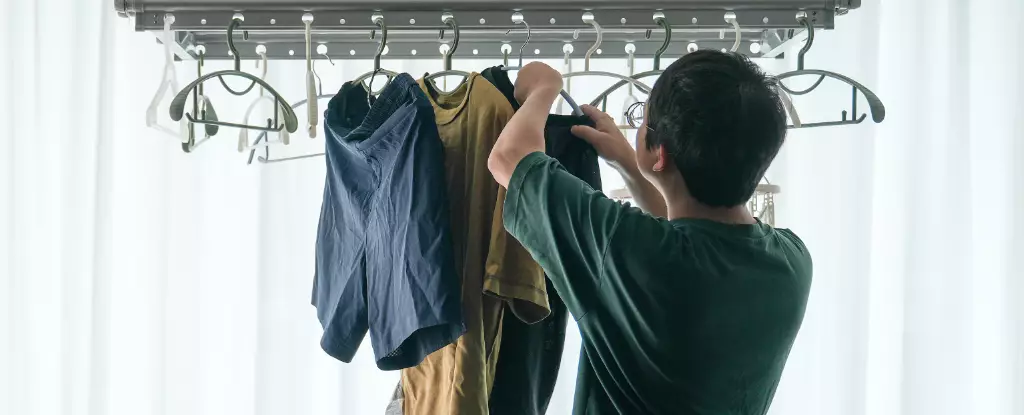As winter storms sweep across the landscape, the quaint image of clothes swaying gently on an outdoor line fades into memory. In recent months, freezing temperatures and powerful winds have left many resorting to indoor drying methods. However, the implications of drying clothes indoors, especially in poorly ventilated areas, go far beyond mundane inconveniences. This shift significantly raises the risk of mould growth, which poses serious health hazards. This article delves into the intricate relationship between indoor drying practices and mould proliferation, exploring the resulting health risks alongside preventative measures.
Mould, a type of fungi, flourishes in conditions of high humidity and cooler temperatures—precisely the conditions often found in indoor spaces lacking ventilation. When clothing retains moisture, it evaporates into the surrounding air, contributing to elevated humidity levels. This moist environment becomes a breeding ground for mould spores, which are microscopic and can easily become airborne. While our everyday exposure to various mould species—like Penicillium and Aspergillus—is typically harmless for individuals with robust immune systems, the concern emerges when mould colonizes damp areas in our homes.
Visible signs of mould can include dark patches on walls or ceilings and a distinct musty odor. Ignoring such symptoms could lead to prolonged exposure, which in turn can result in chronic health issues, especially for susceptible individuals. Fungal spores’ ability to circulate within indoor environments amplifies the risks, converting everyday clothing care into a hidden health threat.
As we breathe in these minuscule spores, our bodies utilize immune defenses to mitigate harmful effects. The immune system is efficient, particularly through the action of macrophages—cells tasked with engulfing foreign particles, including fungal spores. However, not everyone possesses a strong, adequately responsive immune system. Individuals with conditions such as asthma, chronic obstructive pulmonary disease (COPD), or weakened immune defenses face significant threats from mould exposure. For them, fungal spores can exacerbate respiratory issues, triggering inflammation in the airways and leading to further complications.
In severe instances, exposure to high concentrations of mould can result in respiratory blockages or internal haemorrhaging, as fungal structures known as mycelium invade and impede airflow. The growing concerns about diagnosing and treating mould-related ailments highlight the urgency of addressing this often-overlooked aspect of indoor health.
Further complicating matters, the frequency of antifungal drug resistance is on the rise. Medical science often relies on azole antifungals to combat aspergillus infections, but recent studies indicate that resistance is developing not just within patients but also in the broader environment. This resistance may be exacerbated by agricultural practices that employ similar antifungal agents, fostering a challenging climate for effective intervention.
As climate change intensifies, mould species are also adapting. The warming climate may encourage transformation, allowing species not typically pathogenic to humans to evolve the ability to cause infections. This evolving threat, alongside increased resistance, necessitates a proactive stance in public health monitoring and research.
The catastrophic consequences of neglecting mould issues can be dire, as evidenced by the tragic case of toddler Awaab Ishak, whose death was linked to excessive mould in his home. This heartbreaking situation spurred legal reforms, now known as Awaab’s Law, ensuring that landlords address damp-related problems promptly. This legislative change highlights the growing awareness of mould’s impact on health and the urgent need for systemic changes in housing standards.
Preventing mould growth requires vigilance and proactive intervention. Effective ventilation is paramount, as it allows moisture to escape rather than accumulate. Additionally, using dehumidifiers can significantly mitigate excess damp, while heated drying racks present a viable alternative for indoor clothes drying. These measures not only serve immediate aesthetic and practical purposes but also protect the health of all household members.
The simple act of drying clothes indoors can inadvertently cultivate a host of health risks, particularly in damp and poorly ventilated spaces. As understanding of mould’s implications deepens, it becomes crucial for individuals and landlords alike to prioritize health through preventative behaviors. By ensuring adequate ventilation, reducing excess moisture, and remaining vigilant against fungal spores, we can safeguard our homes and well-being. As we navigate changes brought on by climate and lifestyle, proactive measures will serve as our best defense against the hidden dangers lurking within our interiors.

Leave a Reply